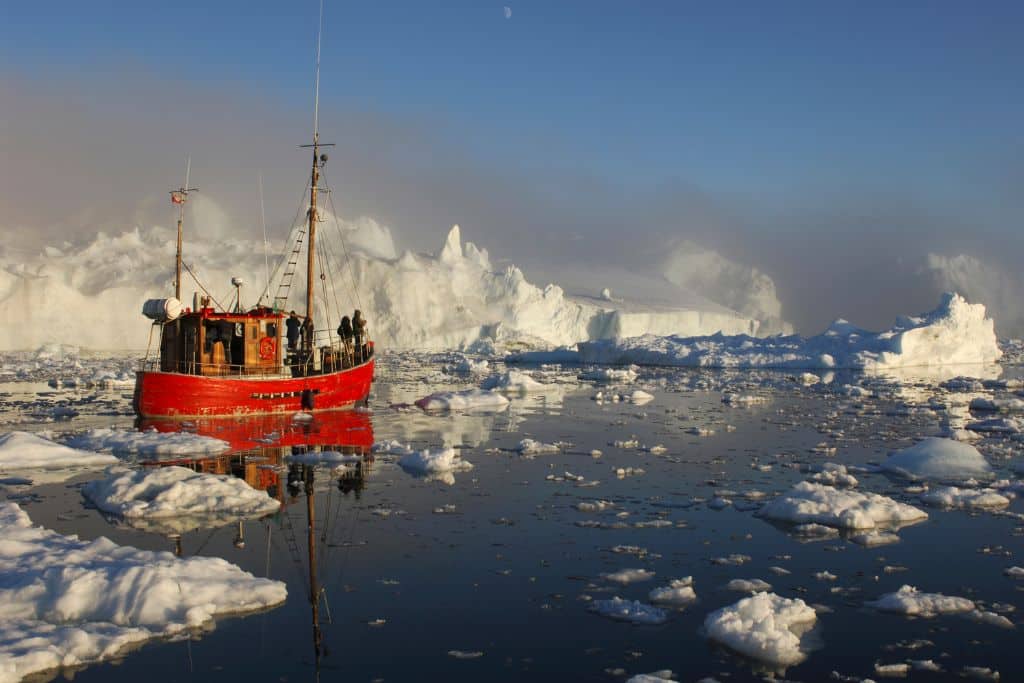Aggravating concerns about global warming and its consequences, a new, comprehensive analysis of satellite data has found Greenland has lost more ice than previously estimated and that the majority of glaciers on the landmass have retreated significantly. The Greenland Ice Sheet has shed about one-fifth more ice mass in the past four decades than previously estimated, researchers at Nasa’s Jet Propulsion Laboratory in Southern California reported in a new paper. Icebergs are falling into the ocean at an accelerating rate. Though this additional ice loss has had only an indirect impact on sea levels, it could hold implications for ocean circulation in the future.
Published in Nature on January 17, the analysis offers a comprehensive look at retreat around the edges of the entire ice sheet from 1985 to 2022, drawing from nearly a quarter million pieces of satellite data on glacier positions. Of the 207 glaciers in the study, 179 retreated significantly since 1985, 27 held steady, and one advanced slightly. Most of the ice loss came from below sea level, in fjords on Greenland’s periphery. Once occupied by ancient glacial ice, many of these deep coastal valleys have filled with seawater – meaning the ice that broke off made little net contribution to sea level. But the loss likely accelerated the movement of ice flowing down from higher elevations, which in turn added to sea level rise.
“When the ice at the end of a glacier calves and retreats, it’s like pulling the plug out of the fjord, which lets ice drain into the ocean faster,” said Chad Greene, a glacier scientist at JPL and the study’s lead author. For decades researchers have studied the Greenland Ice Sheet’s direct contributions to global sea level rise through ice flow and melting. Scientists participating in the international Ice sheet Mass Balance Inter-comparison Exercise (IMBIE) estimated that the ice sheet had lost 5,390 billion tonnes between 1992 and 2020, adding about 13.5 millimetres to global mean sea level, according to the Intergovernmental Panel on Climate Change. But the IMBIE measurements do not account for ice lost due to the retreat of terminal glaciers along the edges of Greenland. (These glacier edges were already in the water, whether submerged or floating.) The new study quantifies this amount: For the 1985 to 2022 period in the new paper, the ice sheet was estimated to have lost about 1,140 billion tonnes – 21% more mass lost than in the IMBIE assessment.
Although it doesn’t add to sea levels, the additional ice represents a significant influx of fresh water to the ocean. Recent studies have suggested that changes in the salinity of the North Atlantic Ocean from melting icebergs could weaken the Atlantic Meridional Overturning Circulation, part of the global “conveyor belt” of currents that transport heat and salt around the ocean. This could influence weather patterns worldwide, as well as affect ecosystems, the authors said.
Icebergs have tumbled from Greenland’s glaciers for thousands of years as part of a natural cycle that typically balanced glacier growth in the winter with melting and retreat in the summer. The new study finds that ice retreat has far outpaced growth throughout the 21st century. The researchers also found that Greenland’s ice extent remained relatively steady from 1985 to 2000, then started a marked recession that continues to this day.
The data showed a glacier in northeast Greenland called Zachariae Isstrom lost the most ice, dropping 176 billion tonnes of mass due to retreat. It was followed by Jakobshavn Isbrae on the western coast, which lost an estimated 97 billion tonnes and Humboldt Gletscher in the northwest, which lost 96 billion tonnes. Only one glacier, Qajuuttap Sermia in southern Greenland, experienced any growth over the study period, but its gains were too small to offset the losses from other glaciers.
The researchers also found that glaciers with the largest seasonal fluctuations in the position of their ice front experienced the greatest overall retreat. The correlation suggests the glaciers that are most sensitive to warming each summer will be most impacted by climate change in the coming decades.
Greenland’s ice loss surges: Satellite data shows alarming retreat

Related tags :


